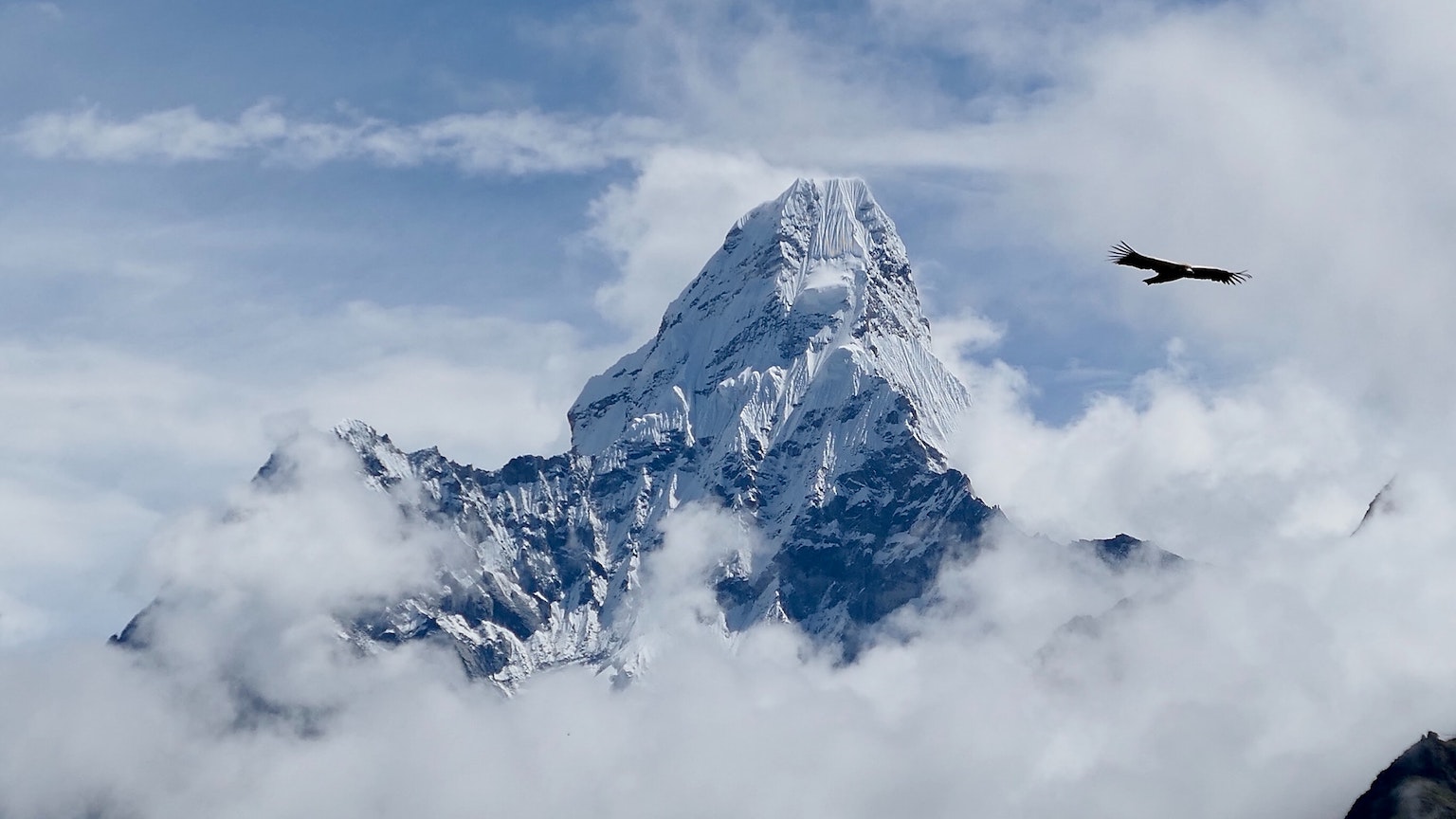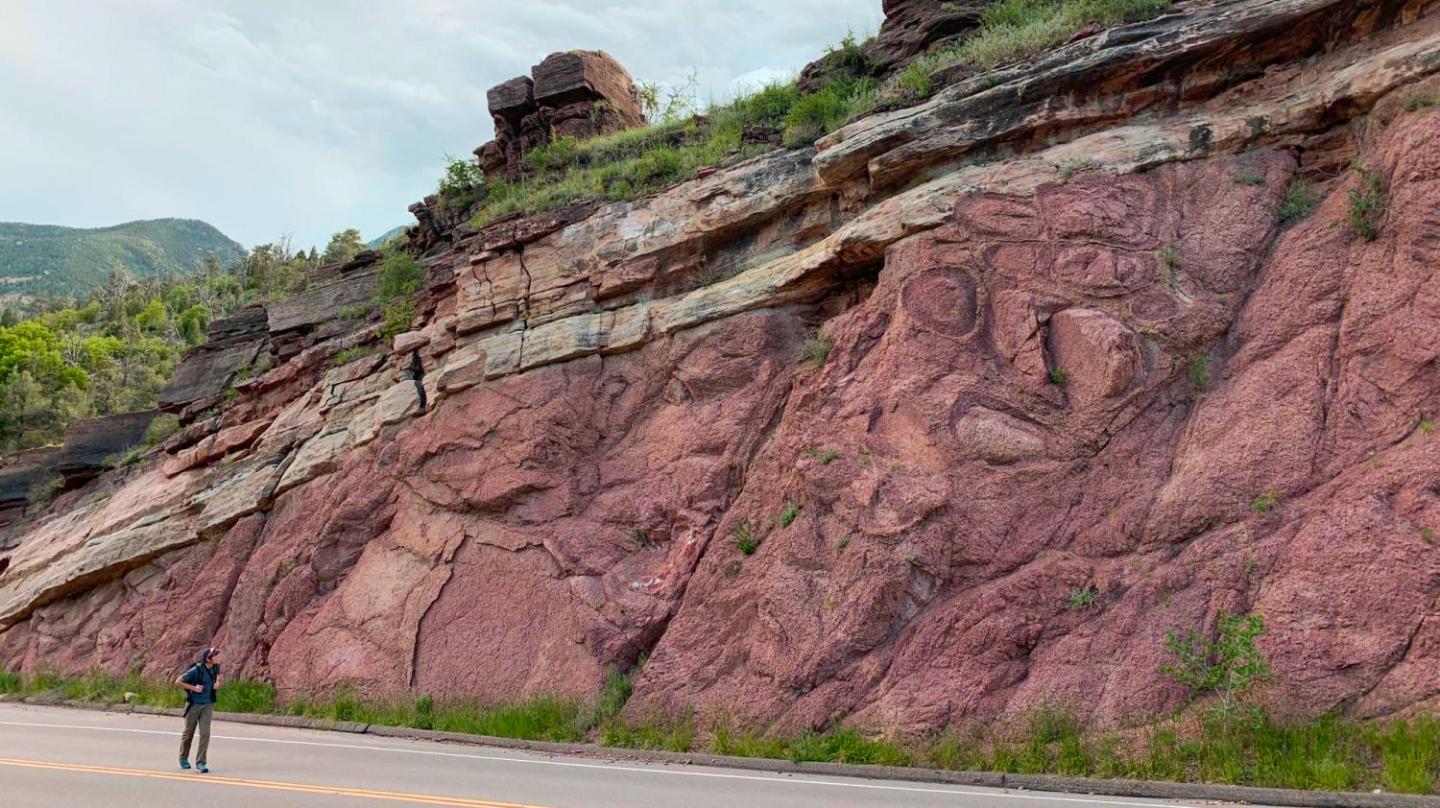“Supermountains” may have influenced the course of life on Earth

- Formation of large mountain ranges, called supermountains, are a rare event in the history of Earth.
- Supermountains create minerals that can only form in high-pressure environments.
- As these mountains erode, they release an enormous amount of nutrients, which in turn, may be connected to jumps in the evolutionary record.
From your vantage point, jagged mountain peaks spread from horizon to horizon with seemingly no end in sight. Each is just as high or higher than Mount Everest, reaching up through the thin atmosphere. This is a view that no longer exists today — one from the top of a range of supermountains. At four times the length of the Himalayas, these supermountains would stretch a distance equivalent to that from New York City to Athens.
Formation of mountains this extensive happened only twice in the history of the Earth, once about two billion years ago and again about 600 million years ago. These supermountains were incredible in their own right, but new research from the Australian National University and recently published in the journal Earth and Planetary Science Letters shows that they may have another claim to fame: influencing the course of evolution itself.
Supermountains and supercontinents
Supermountain formation is linked to the assembly of supercontinents. The first supermountain range was associated with the supercontinent Nuna (also known as Columbia). The Nuna supermountains were almost 5,000 miles long, nearly spanning the entire continent. The second supermountain range formed when East Gondwana (parts of present-day Arabia, India, and Antarctica) collided with West Gondwana (Africa) as the Gondwana supercontinent assembled.
But supermountains don’t form every time a supercontinent does. For example, during the Archean (the eon from 4 to 2.5 billion years ago), the lithosphere (crust and upper mantle) was too thin to support the weight of a supermountain. There may have been some high mountains in the time of Pangaea about 200 million years ago, but they were not as extensive as those found on Nuna or Gondwana.
Searching for evidence
Finding where and when supermountains existed is no trivial task. For this, the authors of the paper searched for zircons found in river fans. Certain types of zircons, like garnet, only form in abundance at high pressures. These high-pressure zircons are characterized by a low content of the rare earth element lutetium. “Zircons can form at any pressure, but low-lutetium zircons can only form at high pressure in the roots of high mountains,” lead author Ziyi Zhu and co-author Professor Ian Campbell told Big Think. “The occurrence of low-lutetium shows the existence of high mountains; their abundance shows how extensive they are.”
The base of very high mountains is perfect for the formation of these zircons. Here, the crust can be 47 miles thick, equivalent to the crust under the Himalayas.
As the mountains eroded, the zircons spread into giant sedimentary fans, large triangular deposits of eroded sediment. Such fans are very common in today’s Himalayas. The team examined 52 modern rivers around the world and searched for these zircons. “From the lutetium content of the zircon, we can identify those that come from the roots of high mountains, and at the same time, we can date the zircons by the uranium-lead method,” Zhu told Big Think. The age of these zircons could then be linked to massive mountains of the past.
How supermountains might have changed the course of life
Nutrients are tied up in the crust of the Earth. Thus, the erosion of these mountains released a huge amount of nutrients, which subsequently may be tied to a jump in the evolutionary record. Mountains erode faster than flat land, and the steeper the mountain, the quicker it erodes. As the mountain erodes, materials are delivered to the ocean.
For example, the Bengal Fan, on the bottom of the Indian Ocean, is the primary sedimentary fan of the Himalayas. Its volume is 20 times the fan of the Amazon and 40 times the volume of the one associated with the Mississippi.
Eroded sediment includes the nutrients that life needs to thrive. Primary among these is phosphorus, which can be found in minerals such as apatite. “The trick,” Zhu and Campbell explained to Big Think, “is to get them into the upper ocean where primitive plants, algae, and cyanobacteria grow. Algae and cyanobacteria are the bottom of the food chain and an essential prerequisite for more advanced life.” An increase in erosion also helps to bury organic carbon, pyrite, and iron, which can in turn increase the oxygen levels in the oceans.
As the Nuna supermountains eroded 1.8 billion years ago, the first macroscopic organisms appeared in the fossil record. These tube-like organisms were called Grypania and were about a centimeter long. Then, about 1.6 billion years ago, there was a boom in the evolution of eukaryotes, when many new supergroups of life appeared.
Similarly, as the Transgondwana supermountains eroded, large amounts of nutrients and oxygen were released. Around the same time, several large evolutionary jumps were occurring: the transition of cyanobacteria to more complex chlorophyte algae, the emergence of many large multicellular organisms, and the “Cambrian Explosion,” a huge diversification of animal phyla.





